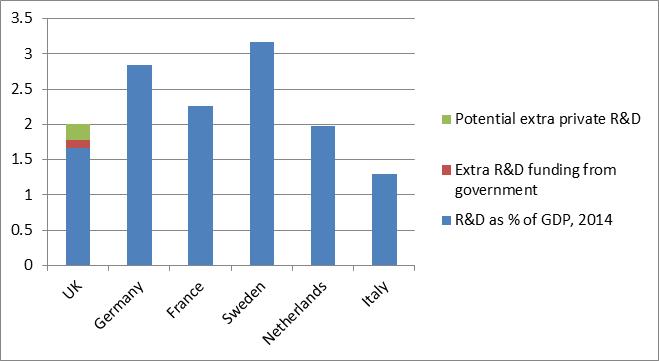The UK government has confirmed that it will spend an extra £2 billion a year by 2020-21 on collaboration between business and scientists as well as creating a technology fund modelled on the Defense Advanced Research Projects Agency (Darpa), the US military research agency credited with developing the internet.
Prime minister Theresa May announced the extra money on 21 November, but there had been concerns that it might go to areas less likely to directly benefit universities, such as research tax credits for companies.
But the Autumn Statement on 23 November made clear that the extra £2 billion – a 20 per cent increase in government research and development spending, according to the statement – will be distributed by UK research councils and Innovate UK in two funding streams.
The first is an “Industrial Strategy Challenge Fund”, a cross-disciplinary fund that will “support collaborations between business and the UK’s science base, which will set identifiable challenges for UK researchers to tackle”.
Based on Darpa, the fund will back technologies “decided by an evidence-based process”.
There will also be a second stream of funding to “increase research capacity and business innovation, to further support the UK’s world-leading research base and to unlock its full potential”.
The UK’s new research body, UK Research and Innovation (UKRI), will award this funding on the basis of “national excellence”, while there will also be more grant funding for Innovate UK.
The extra spending on research and development is part of a National Productivity Investment Fund worth £23 billion from 2017-18 to 2021-22 designed to boost the UK’s lacklustre economic productivity. The chancellor Philip Hammond told the House of Commons that “we do not invest enough in research, development and innovation”.
It is unclear what the split between the two streams will be, which areas the money will be funnelled towards and ultimately how much will end up funding academic research. A Treasury spokesman said the government would give further details “in due course”.
Still, the announcement has received a broad welcome from sector figures. Kieron Flanagan, a senior lecturer in science and technology policy, said he was “pleasantly surprised” by the news, as “it looks like it is genuinely new money”.
“It’s not really investment in science, it’s investment in technology,” he explained. “That’s fine, because that’s what the UK needs” because it has strong fundamental research but a weak technology base, he added.
Darpa was seen as successful in the US because many of its military technology projects, the internet being the best-known example, were seen to have had positive spillover effects into the wider economy, he said. However, there was a huge cultural difference between the “risk-taking culture” of Darpa and the “grant-giving culture” of the UK research councils, he cautioned.
Sarah Main, director of the Campaign for Science and Engineering (CaSE), said that the announcement was “truly exciting”.
“To stay cutting edge, it will be vital that balance is maintained between discovery-led and challenge-led programmes, but I am encouraged that these decisions will rest with UKRI,” she said.
Alice Gast, president of Imperial College London, said that the extra money showed that the chancellor had “recognised that investing in research and innovation is the best way to raise productivity".
The UK lags significantly behind many other wealthy countries in terms of how much it spends on research and development compared with the size of its economy.
CaSE, which campaigns for an increase in R&D spending to 3 per cent of GDP, estimated that this extra money would boost the UK’s spending from 1.67 per cent to 2 per cent, assuming it also stimulates private R&D spending (see graph below).
[caption]
Register to continue
Why register?
- Registration is free and only takes a moment
- Once registered, you can read 3 articles a month
- Sign up for our newsletter
Subscribe
Or subscribe for unlimited access to:
- Unlimited access to news, views, insights & reviews
- Digital editions
- Digital access to THE’s university and college rankings analysis
Already registered or a current subscriber? Login






